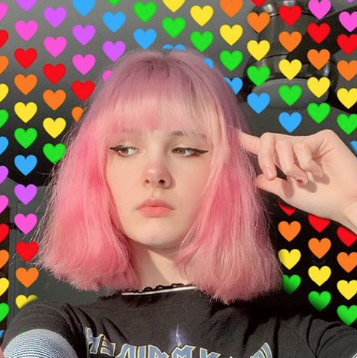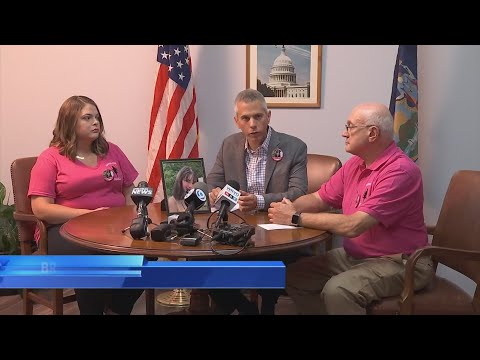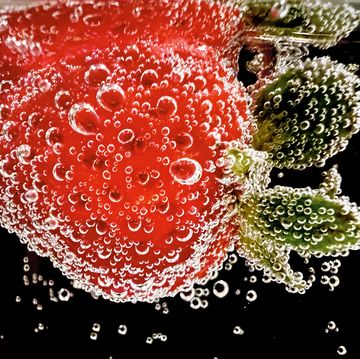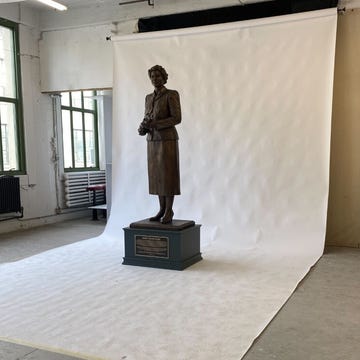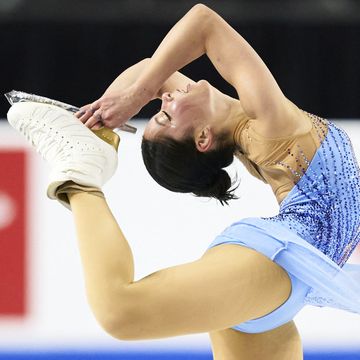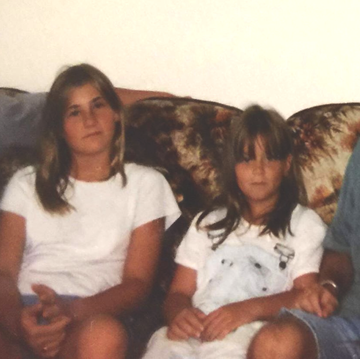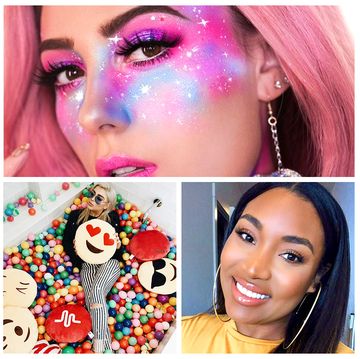By the time Instagram removed the image of 17-year-old aspiring influencer Bianca Devins's bloodied corpse, it was much too late. The photo was allegedly posted to the Instagram account of Brandon Clark, who has been charged with killing Devins on July 14. Clark has pleaded not guilty to the charge. The photo was up for hours and had already been re-grammed, modified, and turned into memes by bottom-feeding trolls tagging her handle, @escty. Some sick profiteers even promised to send it via DM, in exchange for a follow.
Instagram couldn’t keep up in the ensuing game of whack-a-mole: As soon as they removed one photo, three or four more popped up and, for days, the graphic content spread like wildfire.
Frustrated by the social media giant’s inability to act quickly enough, a furious army of teenage girls took it upon themselves to drown out the digital vandalism. Dubbed “tag cleaners” by The Verge, these dozen or so anonymous high schoolers from all over the world—none of whom had ever heard of Devins before the murder, and none of whom even knew each other—whipped out their phones and, for hours on end, uploaded and tagged her in thousands and thousands of snaps of pink clouds and glittering rainbows and baby animals, using the hashtag #ripbianca.
More From ELLE

It worked. As the gory images slid further and further down Devins’s tagged feed, they became harder for the social media fomenters to find and share.
Instagram has since collected a database with edited versions of the original photo, which they use to actively detect and remove any new uploads, but it has the unsung social media vigilantes to thank for patrolling and cleaning up Devins’ profile in the hours after her murder. These young taggers take immense pride in eradicating online evil through their altruistic content spamming—but the work, they say, takes its toll.
A 16-year-old named Hannah, who initially decided to “pitch in with tagged photos when it got so bad that there were more bad photos than good ones,” uploaded over 800 photos of baby animals and mesmerizing nail art in the span of 8 hours. She went to bed that night feeling anxious, unable to get the image of Devins’s mangled corpse out of her head. “I felt awful,” she told ELLE.com, “but I also just felt so horrible about what happened and I felt it was extremely important to hide the photos so Bianca’s family didn’t have to be reminded of it.”
Taylor, a 17-year-old tag cleaner, said she didn’t eat for two days after posting 476 photos of flowers and Hello Kitty under a handle honoring Bianca. “I’d always check to see how much gore was being posted and the pictures made me sick to my stomach,” she tells ELLE.com. “I couldn’t get her off of my mind for like a week.”
The other cleaners we spoke with, all girls ranging in age from 14 to 18, experienced similar symptoms: loss of sleep, nightmares, anxiety, depression.
"Moderation," as one cleaner summed up, "is a rather exhausting job."
Even with formal training in content moderation, repeated exposure to gory graphics can be draining and, in some cases, trauma-inducing. In a Verge feature from Casey Newton titled, "The Trauma Floor," Facebook content moderators revealed they suffer trauma from staring at hate-speech posts, videos of violent attacks, and graphic pornography all day long.
Those moderators, of course, are officially employed by Facebook (Instagram's parent company) and go through weeks of training. The unofficial tag cleaners of Instagram, however, are not employed by the company and have no formal training. They're empathetic teen girls who feel a connection to a victim. For 17-year-old Taylor, it was her shared age with Devins. For a 14-year-old tagger (who has requested we withhold her name), it's because she suffers from depression, and doesn't want anyone else to see violent images and become depressed themselves.
Pam Ramsden, a lecturer in psychology from the University of Bradford and author of the study "Vicarious trauma, PTSD and social media: Does watching graphic videos cause trauma?" told ELLE.com that while these Gen-Z volunteers, "probably feel that they are being helpful, the reality is that they are damaging themselves."
"In some cases, not all cases, this could cause PTSD, and on the lesser side it can cause stress and anxiety to the viewer," Ramsden says. "The most important determination in these cases is, 'What does it specifically mean to the person viewing the images?' If they can imagine themselves in this situation the harm can be doubled or even tripled. If they view it as 'well, bad things can happen,' it's not as bad, but it is still very harmful."
Where teen boys tend to "internalize these images," Ramsden added, teen girls will, "externalize," which could result in mental illness such as depression, anxiety and stress reactions.
Teen groups fighting the spread of violence online aren't limited just to Instagram, they're found on all sorts of social platforms. Earlier this summer, Buzzfeed reported on an 18-year-old named Liz W., who collects and exposes users with potentially predatory behavior on her TikTok page @bithoeji.
"Teens want to feel like they can do something," editorial director of Common Sense Media Sierra Filucci told ELLE.com. "It's one thing to be exposed to the news, to maybe understand partly why something happened, but that only goes so far. Teens feel like this is their world, and it makes them wonder what they can do to make a positive difference."
Especially, Filucci said, when they feel like big tech companies are failing them.
"Instagram, TikTok, Snapchat, whomever, cannot manage the amount of awful content that's being spread around," she said, "So the kids who are online all the time are basically taking it upon themselves to do their work."
When reached for comment, an Instagram spokesperson told ELLE.com the platform is "a place where communities often come together to support others in time of need. We see this behavior in many areas, including young people expressing the moments when they feel most vulnerable."
Instagram, the spokesperson added, "continue[s] to take every measure we can to remove this content from our platforms.”
However, Devins's family believes the company's response was slugging in the aftermath of her murder. On Wednesday, her mother, Kimberly Devins, joined U.S. Rep. Anthony Brindisi at a press conference to call on the Federal Trade Commission and Instagram to step up their policing of violent social media content. “If these images were seen on our local TV stations, the FCC would have fined those TV stations the day after they appeared,” Brindisi said during the press conference. “However, the roughly 7-in-10 Americans who use social media, with nearly one billion Instagrams, saw this particular content for weeks after the awful event.”
“Social media has changed the way people communicate and has opened a Pandora’s box for abuse and harassment in ways we could not have anticipated,” he added. “This case is an example of that and we must be better.”
The teen taggers who cleaned Devins's agree. "It's like, WTF Instagram, you honestly did a horrible job," 16-year-old Maria said. "Like, we're basically doing your job for you and we're young and shouldn't have to do this, you know?"
Rose is a Senior Editor at ELLE overseeing features and projects about women's issues. She is an accomplished and compassionate storyteller and editor who excels in obtaining exclusive interviews and unearthing compelling features.

